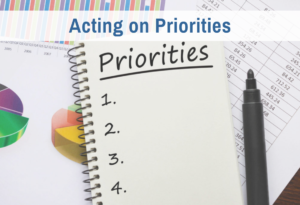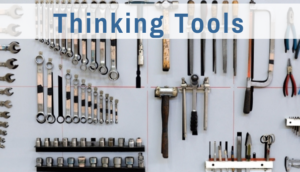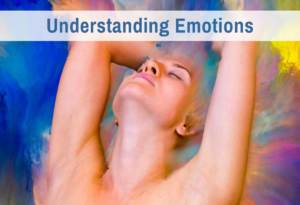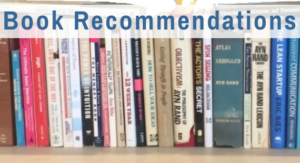Emotional presence is a sometimes elusive state that is variously called being “in the moment,” or “in the flow,” or “centered,” or “grounded,” or “present.” I think of it as a state of mental poise, which you achieve by being fully aware of your surroundings and your purpose. You are aware of what is most important to you in this moment—the top value at stake—without feeling any pressure. It’s possible to put yourself into a present state with skill. It’s an important capacity to develop, especially if you want to be non-defensive in conversations.
The people who seem to know the most about emotional presence are athletes, actors, and new-age mystics. They all see it as crucial to being able to perform at a high level. Unfortunately, none of them explain it very well. The idea is elusive because it involves physical, cognitive, and emotional elements. Putting some of the vague ideas floating around together with the substantive work of Marshall Rosenberg and F.M. Alexander, plus the Objectivist view of free will, I’ve worked out a 5-step process that is the best method to bring myself into a poised state.
1. Am I tense? Release the body tension.
The first step is physical. A normal, poised body is relaxed and ready to move—not tense. If there is any undue muscle tension in your body, it is both blocking awareness of other feelings and interfering with physical activity.
The expert in physical poise is F.M. Alexander. I think of this step as “Let my neck be free” because that is the fundamental instruction of the Alexander Technique. The neck is the root source of most body tension. It is the first place to tense and the last to let go. So, the first step is to check in with your neck, and see if you are in a physically ready state.
2. Do I have urgent unmet physical needs? Meet them.
The second step is also physical. If you are hungry, tired, thirsty, in pain, etc., you cannot concentrate or move freely. Often tension masks these negative feelings, so you need to release the tension before you even get an accurate reading on bodily needs.
3. Am I straining? Clear my head.
The third step is cognitive. If you are experiencing any form of strain—any type of dysfunctional state such as overload, blankness, conflict—you cannot think logically. You literally do not have the mental capacity to hold the full context at that moment. That’s because these problems are at root a problem of mental overload (yes, even blankness). The rational step to take is to reduce the load. This is typically done by dumping the information to paper (as a list or thinking on paper) or talking through it aloud (with another person as a sounding board). Once you have offloaded all the information, you can start analyzing it logically and move step by step to a new conclusion.
4. Am I experiencing intense emotions? Identify the deep value at stake right now and/or take a timeout.
The fourth step is emotional/evaluative. Intense emotions, whether they are positive or negative, create self-reinforcing emotional loops. This is proper and even necessary in some circumstances, such as when you are enjoying your wedding or grieving over the loss of a loved one. But you cannot be poised for effective action when you are experiencing intense emotions.
When you’re poised for action, you need to be in a relatively neutral emotional state, or else the emotions create internal distractions.
Emotional poise comes from being able to separate yourself from the emotions enough to identify the deep values underlying them. A focus on values rather than emotions is consistent with poise.
The best method I know to do this is what I call emergency introspection, which I teach in my All About Emotions class in the Thinking Lab. Even this doesn’t always work, if you are strongly triggered. In those cases, the best you can do is give yourself a timeout to let the emotions settle and reflect on the situation.
(My method of emergency introspection is based on Marshall Rosenberg’s work. In the Better Relationships intensive, this is one of the skills we practice.)
5. Am I drifting? Identify a conscious purpose.
The last element of emotional presence is a conscious purpose. Like a bicycle, your mind needs to be moving forward purposefully to be in a poised state. Objectivists will recognize purposefulness as the essence of the choice to focus.
I find it’s not always possible to get into a present state, but with this 5-step sequence it is much more likely that I can. The order matters. If you are tense, you block some body feelings and emotions, exacerbate others, and create strain. If you are straining, you do not have the resources to introspect emotions or set a conscious purpose.








0 Comments